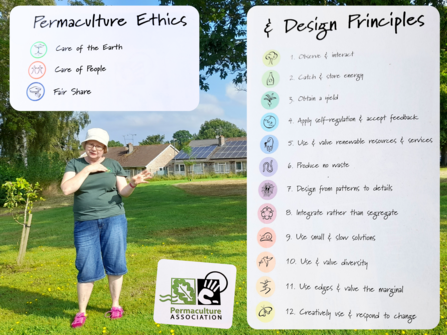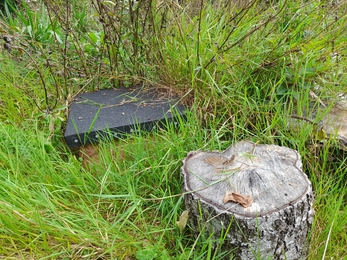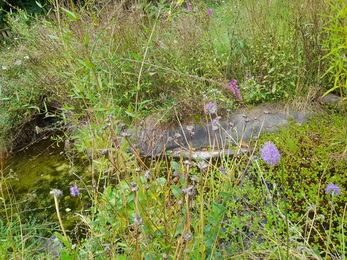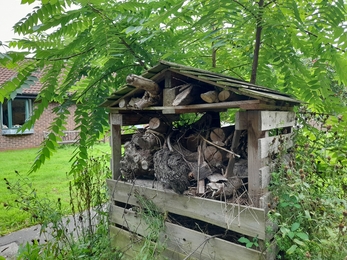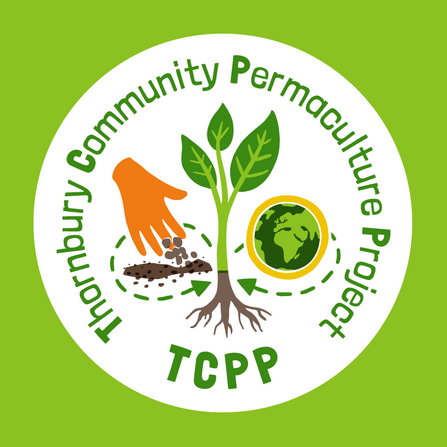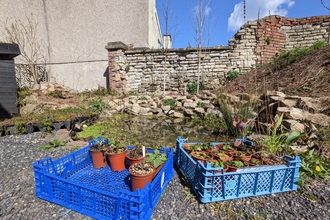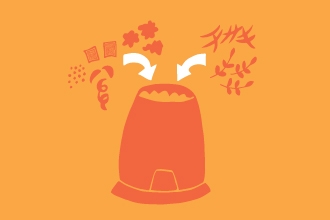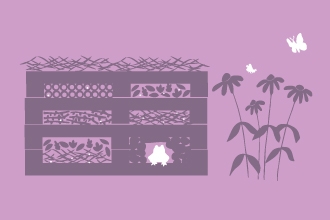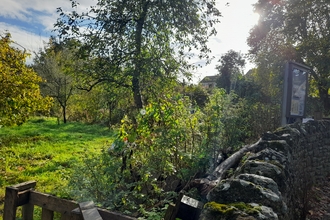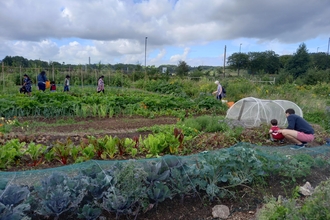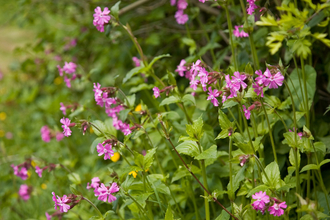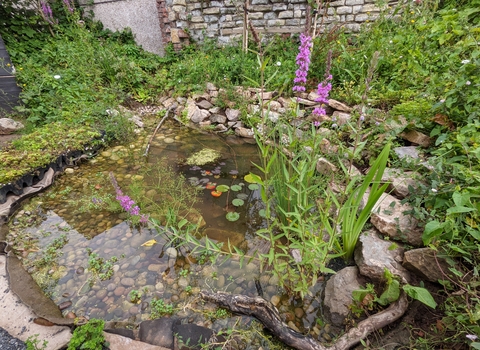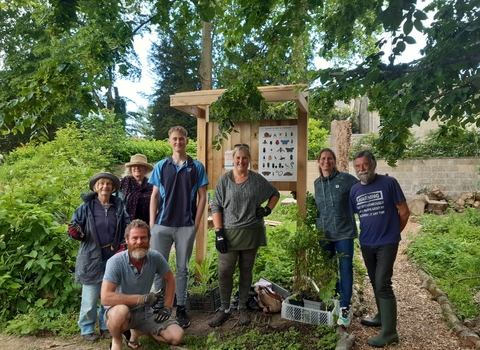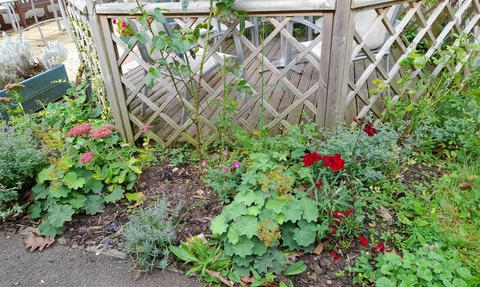
Sophie Bancroft
Thornbury Community Permaculture Project
An Intro into permaculture gardening
The Thornbury Community Permaculture Project is a beautiful garden in the grounds of a care home, managed by the group and is owned by South Gloucestershire Council. Permaculture principles are used as the basis of all gardening carried out. There is a relaxed, welcoming and friendly environment, with no silly questions asked and knowledge and learning is openly shared.
Thornbury Community Permaculture Project is one of the projects, part of Sustainable Thornbury, so is Thornbury Orchard Group, which helps with the development of the group in terms of structure, funding, local links and sharing resources.
Group set up timeline
- December 2021: contact with local groups
- February 2022: permission granted form South Gloucestershire Council to manage the land at the care home as a community garden.
- March 2022: free compost and woodchips offered from Thornbury Composting!
- April 2022: Five no-dig beds created (using different methods)
- June 2022 - Voted into Sustainable Thornbury
- July 2022: Volunteer agreement and risk assessments created
- February 2023 TADLOF funding awarded for a sensory garden
Making local connections
Thornbury Community Permaculture Project are very good at communicating with the care home residents and staff, local council (land owners) and local groups to work together to benefit local people and wildlife. They meet on a regular basis to discuss progress. It is important to stick to the guiding permaculture principles and strike a balance between what everyone wants to achieve.
Local business connections also brought about free soil and woodchip from Thornbury Compost centre.
What is permaculture?
There are many definitions, but permaculture basically works with nature and uses natural cycles and ecosystems to form principles for long term growing and land management. These principles can be applied to small gardens, allotment plots, large community spaces and farming. Permaculture is 'a design' process which in this instance has been applied to gardening but can be applied to all areas of life.
Three Main principles:
- Earth care
- People share
- Fair share
Then there are more principles that stem from these three to help guide practices to work with the earth rather than against it. Emma explains these very well in the featured video. Some are common sense – such as observe and interact (pay attention) which involves seeing what’s in your garden already, where the sun is, where it is shady or wet are great ways to help understand the outdoor space. Use and value renewables includes seed saving, water saving and making your own compost.
You mimic nature in as many ways as possible, such as not planting uniform rows of the same crop. Variety is good!
Good practices to try at home
Thornbury Community Permaculture Project have a great attitude of trying something out without fear of failure – just considering the permaculture principles and learning and evolving. Wildlife gardening works with nature. Here are some ideas that might spark inspiration for you to try at home or in your community space.
TIP: Start with small manageable projects, don’t do too much too soon!
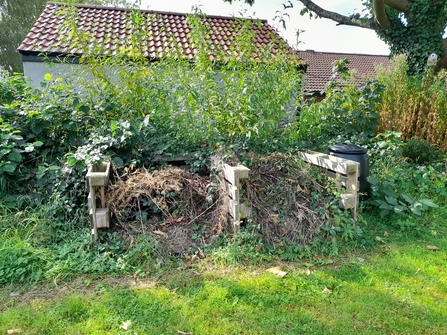
Sophie Bancroft
Compost – producing no waste is a permaculture principle.
Leaf mould collector- It makes sense to locate this under a tree!
Hedges – they encourage more native hedges and trees.
Hedgehog houses and holes so that hedgehogs can move freely around the site.
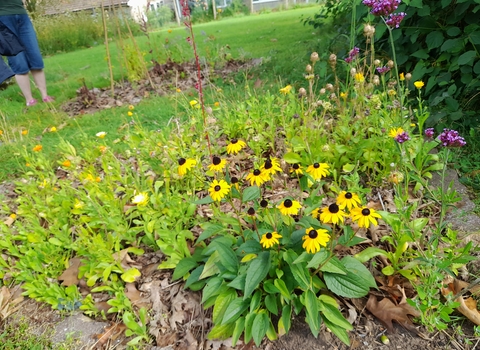
Sophie Bancroft
No-dig beds
No-dig has been a popular word. The basic meaning is that you don’t disturb the soil life by digging. Thornbury Community Permaculture Project trialled different methods of no-dig to see which worked the best in this setting. Paving slabs from the care home were used as they were available on site. Most plants were grown from seed or donated.
- Cardboard, compost
- Lasagne method (layered) Cardboard, wood chip, compost
What they grew in the first year: red orach (spinach-like leaves), calendula edible flowers, chives, strawberries, sedum, fennel, callaloo, rainbow chard, artichoke, rosemary, thyme.
Everything plated was intentional with a use in mind.
No-dig beds lesson learned: the fennel grew quite tall and it was very windy where it was planted, so had to be relocated. Always have an attitude towards learning about what works and what doesn’t.
TIP: Add structure all the time with materials from nearby, such as leaves.
HEADS UP: A lot of soil is required in a small space using this method. Thornbury Community Permaculture Project are very grateful to Thornbury Compost Centre for their donations! Making local connections is a very good idea for community spaces.
Eventually soil will be created on site through the various compost areas.
More ideas from Thornbury Community Permaculture Project
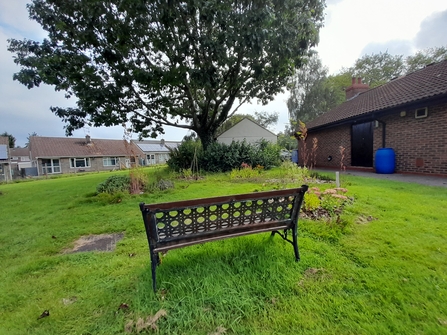
Sophie Bancroft
A bench – it’s important to take the time to stop, look and appreciate what you have. Contemplate what you would like to see and do and welcome a social element to the outdoor space.
A herb spiral – this is being planned by Thornbury Community Permaculture Project at the moment. A great project with drought resistant gardening in mind.
Set up area – somewhere specific for sorting the cardboard, compost and area to plant in.
Access paths are also important, as well as a good tool shed to keep the tools safe and dry.
TIP: When choosing plants, Thornbury Community Permaculture Project consider whether they’re native, a pollinator and their function. They also asked the care home residents to vote on what they would like to see, to encourage involvement and ownership of the gardens. The winning votes were for winter jasmine and white passion flower to be added to the garden.
Wildflower meadow This is an important, rich habitat that houses many wildflowers, providing food and nectar sources for pollinators as well as food and cover for mammals and birds. Wildflower meadows are also beautiful to look at and super interesting when you look closely.
RESOURCES: Community wildflower meadows Mini meadows at home
Birdboxes There are many ways to support birds, such as adding bird boxes like Thornbury Community Permaculture Project.
RESOURCE: Team Wilder Birds
Deliberate wild areas and wild edges. The garden is large, so connecting the areas is important to create corridors on the site and beyond. See which actions for nature are taking place near you to also connect activity and green spaces on the Team Wilder Actions Map,
Wildlife pond - Adding a pond is one of the best things you can do for wildlife in your garden or outdoor space, even a small pond can attract wildlife, including dragonflies, damsel and frogs. They also become a feeding ground for birds, bats, hedgehogs - who are amazing pest controllers!
RESOURCE: Team Wilder Ponds
Insect houses surrounded by wildflowers does absolute wonders for the soil and biodiversity nearby.
RESOURCE: How to make a bug hotel
Advice to people considering using permaculture in their garden or community spaces
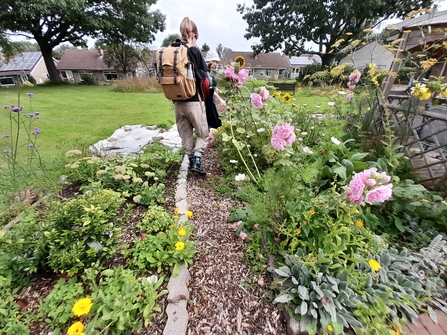
Sophie Bancroft
- Get permission from the land owner if you’re in a community setting.
- A no-dig system has many advantages! Higher yields, knowing that you’re not disturbing the ecology in the soil.
- Grow what you want and like to eat!
- Be prepared to fail. It’s good to learn from experience. Don’t let failing be a barrier to having a go.
- If you’re at home you can tend to the garden daily. In community spaces you’ll have less time there, so consider drought resistant options
- Observe the area first – where is there sun light, shade and wind etc.
- Make a note of everything you plant in a diary straight away, with relevant planting or conditions information.
The impacts of this community garden is felt by local wildlife - providing a safe haven for birds, bees, bugs, butterflies, moths, hedgehogs, foxes, frogs, dragonflies and many more creatures to live, shelter, eat, drink and breed. Looking at the entire process as an ecosystem to work with nature rather than against it makes a lot of sense. This in turn brings benefits to the people involved.
Benefits experienced by Emma at include igniting and passion to learn and try permaculture projects, amazing benefits to mental health connecting with nature and people. It gives you purpose and you have the option to do as much or as little as you like.
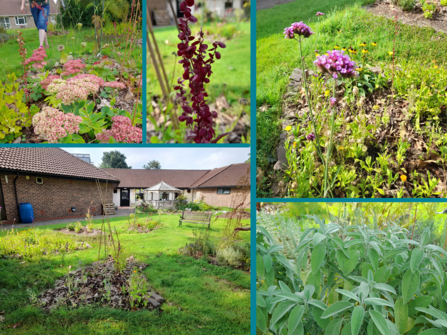
Sophie Bancroft
Get involved with Thornbury Community Permaculture Project!
Fridays 9.30 – 11.30am
More information on: Thornbury Community Permaculture Project Facebook group
And the Sustainable Thornbury website
Resources

(C) Hannah Bunn
Be part of Team Wilder
All actions for nature collectively add up and creates life for people and wildlife.
Share your actions for nature, like Tom by sharing and tagging @avonwt on social media and
Log your actions for nature on the map



